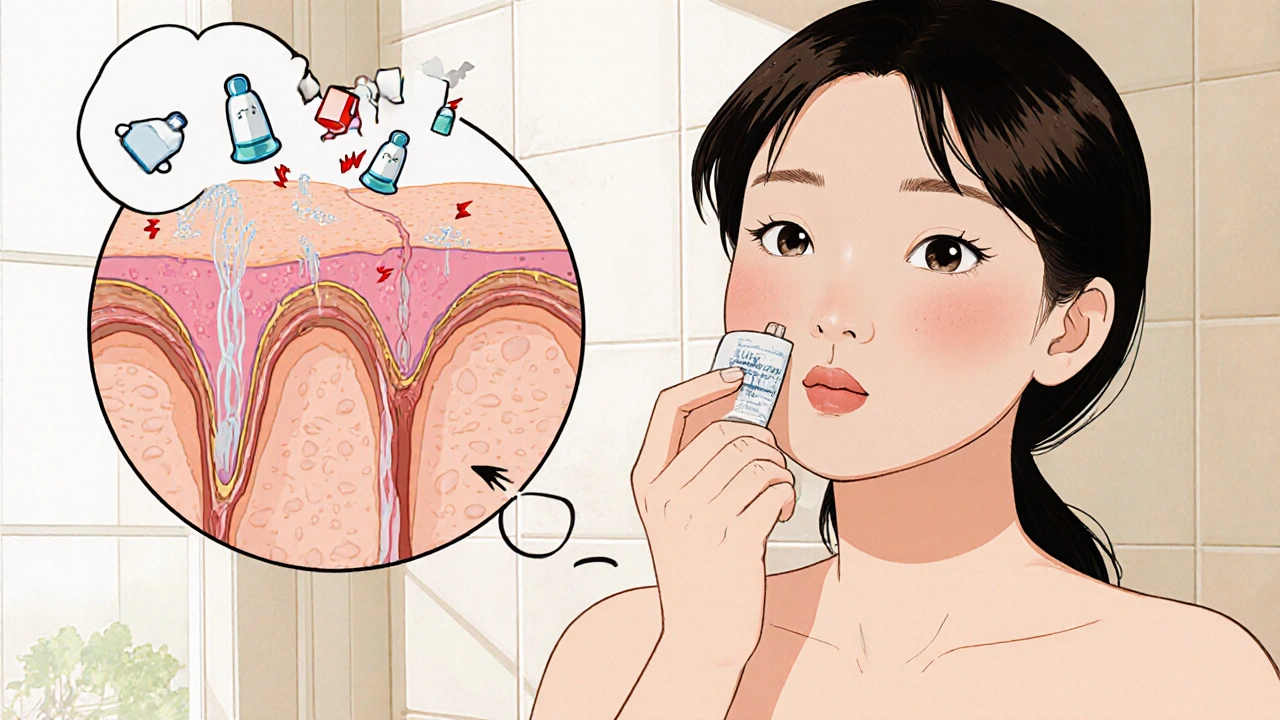Acne treatment: what really works and what to avoid
Most acne clears with the right routine, but using the wrong products can make it worse fast. Start simple: a gentle cleanser, one active treatment, and a light moisturizer. Key over-the-counter ingredients to try are benzoyl peroxide, salicylic acid, and adapalene. Benzoyl peroxide kills acne bacteria and reduces inflammation; start with 2.5% to lower irritation. Salicylic acid helps unclog pores and is good for blackheads. Adapalene is a topical retinoid that speeds cell turnover and prevents new spots. Dapsone gel can help inflamed acne, especially if antibiotics aren’t an option.
A simple routine matters more than lots of products. Cleanse twice daily with lukewarm water. Apply your active treatment to dry skin and wait a few minutes before moisturizing. Use sunscreen every morning; many treatments increase sun sensitivity.
Quick daily routine
AM: cleanse, apply light moisturizer, finish with sunscreen. PM: cleanse, apply treatment (benzoyl peroxide or adapalene), then moisturizer. If your skin gets dry, cut treatment every other night and use moisturizer more.
When to see a dermatologist
Book a consult if you have painful cysts, fast spreading acne, scarring, or no improvement after three months of consistent OTC care. Prescription options include topical antibiotics (usually combined with benzoyl peroxide), oral antibiotics short term, hormonal meds for women, spironolactone, and isotretinoin for severe nodular acne. Isotretinoin works but requires strict pregnancy prevention and regular blood tests.
Avoid topical steroids on the face unless a doctor prescribes them; they can cause steroid acne and skin thinning. Don’t mix benzoyl peroxide and tretinoin at the same time; they can cancel effects or irritate. Use one at night and the other in the morning or separate by a few hours.
Diet and lifestyle matter. High glycemic foods and skim milk can trigger breakouts for some people. Track what you eat for a few weeks to spot links. For scarring, early treatment reduces long term damage. Ask about chemical peels, microneedling, laser treatments, or punch excision depending on scar type.
Patch test new products on your jawline for three days. If redness, burning, or swelling appears, stop and see a pro. If you take medications or are pregnant, talk to your doctor before starting treatments. Safety matters more than quick fixes.
Want targeted help? See a dermatologist for a plan that fits your skin type, lifestyle, and goals. Expect to see improvement in 6 to 12 weeks. Early purging with retinoids is common; it usually settles after a month. Choose non-comedogenic moisturizers with ceramides or hyaluronic acid to repair the skin barrier without clogging pores.
Avoid heavy oil-based makeup. Use mineral or water-based formulas and remove makeup before bed. Hands off. Popping or picking spreads bacteria and raises the chance of dark marks and scars. If you have sensitive skin, try lower concentrations and add products one at a time. Keep a skin diary with photos to track progress and share it with your doctor at visits. Small, steady steps beat frantic product hopping today.


